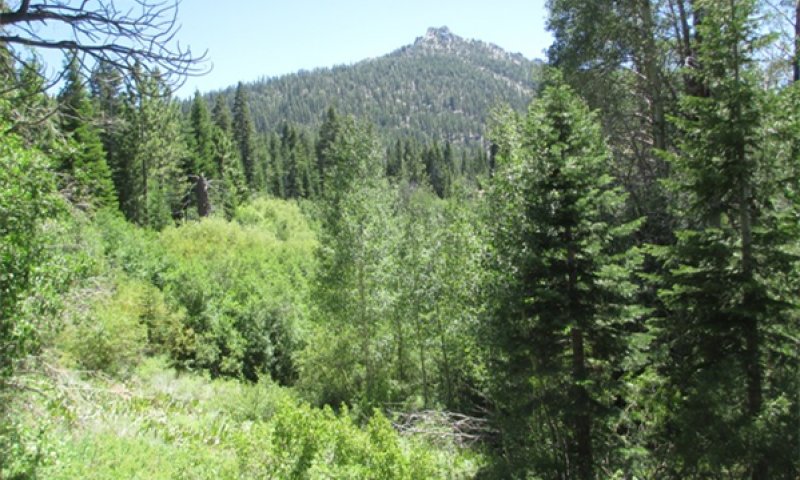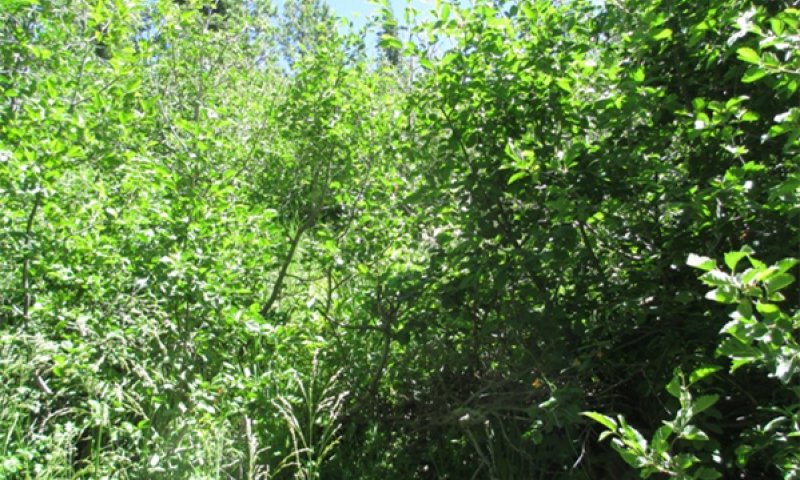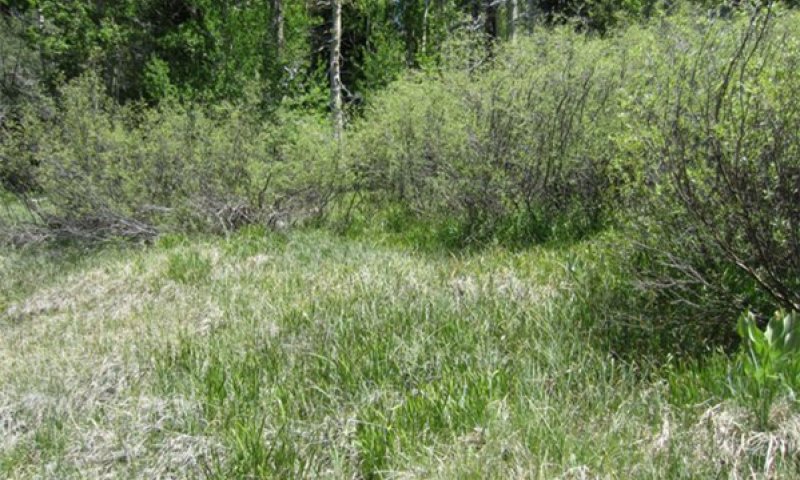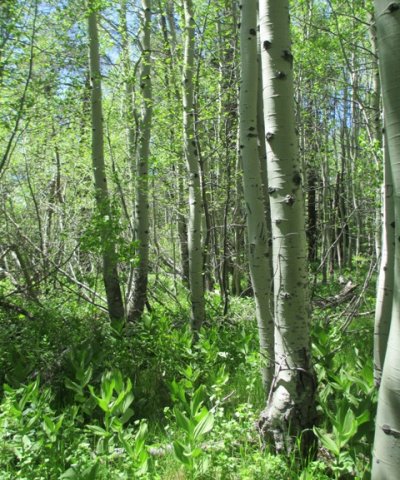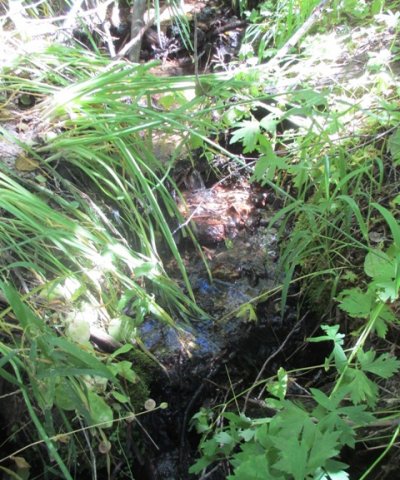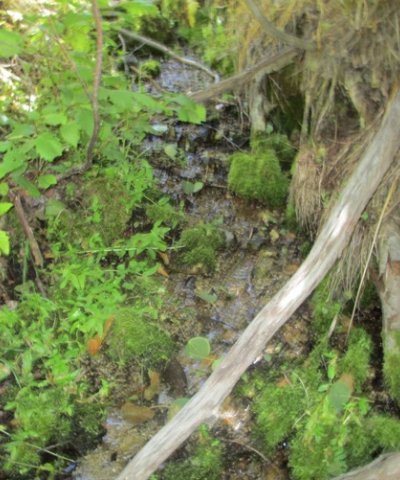

Natural Resources
Conservation Service
Ecological site R022AX105CA
Steep Mountain Drainageways
Accessed: 12/21/2025
General information
Provisional. A provisional ecological site description has undergone quality control and quality assurance review. It contains a working state and transition model and enough information to identify the ecological site.
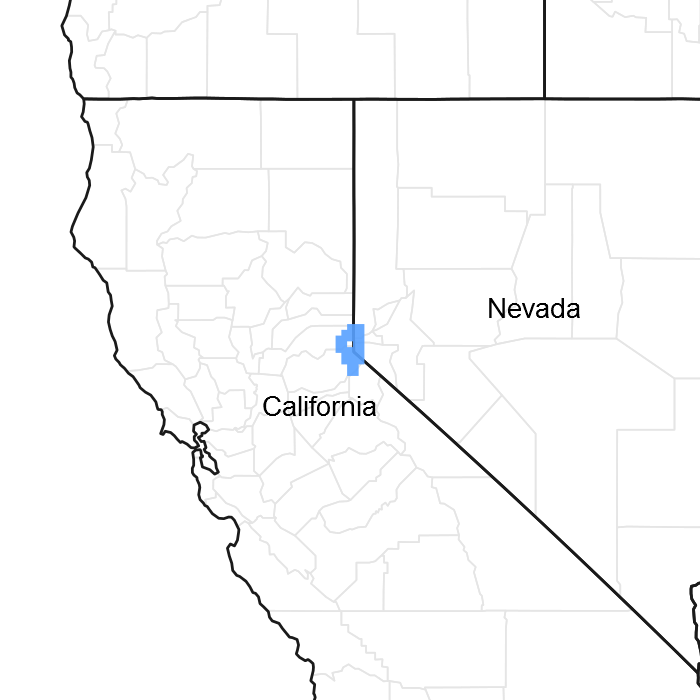
Figure 1. Mapped extent
Areas shown in blue indicate the maximum mapped extent of this ecological site. Other ecological sites likely occur within the highlighted areas. It is also possible for this ecological site to occur outside of highlighted areas if detailed soil survey has not been completed or recently updated.
MLRA notes
Major Land Resource Area (MLRA): 022A–Sierra Nevada and Tehachapi Mountains
Major Land Resource Area 22A, Sierra Nevada Mountains, is located predominantly in California and a small section of western Nevada. The area lies completely within the Sierra Nevada Section of the Cascade-Sierra Mountains Province. The Sierra Nevada range has a gentle western slope, and a very abrupt eastern slope. The Sierra Nevada consists of hilly to steep mountains and occasional flatter mountain valleys. Elevation ranges between 1,500 and 9,000 ft throughout most of the range, but peaks often exceed 12,000 ft. The highest point in the continental US occurs in this MLRA (Mount Whitney, 14,494 ft). Most of the Sierra Nevada is dominated by granitic rock of the Mesozoic age, known as the Sierra Nevada Batholith. The northern half is flanked on the west by a metamorphic belt, which consists of highly metamorphosed sedimentary and volcanic rocks. Additionally, glacial activity of the Pleistocene has played a major role in shaping Sierra Nevada features, including cirques, arêtes, and glacial deposits and moraines. Average annual precipitation ranges from 20 to 80 inches in most of the area, with increases along elevational and south-north gradients. Soil temperature regime ranges from mesic, frigid, and cryic. Due to the extreme elevational range found within this MLRA, Land Resource Units (LRUs) were designated to group the MLRA into similar land units.
Major Land Resource Area 22A, Sierra Nevada Mountains, is located predominantly in California and a small section of western Nevada. The area lies completely within the Sierra Nevada Section of the Cascade-Sierra Mountains Province. The Sierra Nevada range has a gentle western slope, and a very abrupt eastern slope. The Sierra Nevada consists of hilly to steep mountains and occasional flatter mountain valleys. Elevation ranges between 1,500 and 9,000 ft throughout most of the range, but peaks often exceed 12,000 ft. The highest point in the continental US occurs in this MLRA (Mount Whitney, 14,494 ft). Most of the Sierra Nevada is dominated by granitic rock of the Mesozoic age, known as the Sierra Nevada Batholith. The northern half is flanked on the west by a metamorphic belt, which consists of highly metamorphosed sedimentary and volcanic rocks. Additionally, glacial activity of the Pleistocene has played a major role in shaping Sierra Nevada features, including cirques, arêtes, and glacial deposits and moraines. Average annual precipitation ranges from 20 to 80 inches in most of the area, with increases along elevational and south-north gradients. Soil temperature regime ranges from mesic, frigid, and cryic. Due to the extreme elevational range found within this MLRA, Land Resource Units (LRUs) were designated to group the MLRA into similar land units.
Ecological site concept
This ecological site occurs on steep headwater to first order drainageways in colluvial valleys (valley type II) at elevations typically between 6,400 and 8,000 feet and slopes typically between 5 and 15 percent. Several community types are present. Species such as quaking aspen (Populus tremuloides), thinleaf alder (Alnus incana ssp. tenuifolia), and Lemmon's willow (Salix lemmonii) are common. There is a high diversity of associated species.
Associated sites
| F022AC003CA |
Frigid-Cryic Sandy Slopes This ecological site occurs on northern aspects on colluvial soils with a cryic temperature regime. Mountain hemlock (Tsuga mertensiana) and California red fir (Abies magnifica) mixed forests are present. |
|---|---|
| F022AE007CA |
Frigid, Sandy, Moraines And Hill Slopes This ecological site occurs on moraines, with white fir mixed conifer forests. |
| F022AE013CA |
Frigid, Loamy, Volcanic Mountain Slopes This ecological site occurs primarily on volcanic mountain slopes. A white fir mixed conifer forest is present, with a diverse understory. |
| F022AE025CA |
Loamy Moist Outwash This ecological site occurs on outwash. White fir- Jeffrey pine forests are present, with lush understory of moist indicator species. |
| F022AF002CA |
Frigid, Sandy, Or Loamy Outwash This ecological site occurs on outwash with a Jeffrey pine forest present. It occurs on the drier eastside LRU, with upland shrubs. |
| F022AF004CA |
Frigid, Shallow To Deep, Sandy Mountain Slopes This ecological site occurs on moderately deep soils, on south facing granitic mountain slopes. There is an open Jeffrey pine forest with montane shrubs in the understory. |
| F022AF005CA |
Frigid, Deep To Very Deep, Sandy-Loamy Mountain Slopes This ecological site occurs on deep to very deep soils on north facing granitic mountain slopes. There is a dense white fir- Jeffrey pine forest, with little understory. |
| F022AF006CA |
Loamy Frigid Metamorphic Slopes This ecological site occurs on moderately deep to very deep, metamorphic mountain slopes. There is a white fir mixed conifer forests, with a diverse and productive understory. |
| F022AX101CA |
Moist Colluvial Headwater System This riparian aspen forest occurs on colluvial hillslopes, and typically lacks a true channel or the mountain alder and willow communities. |
| R022AE217CA |
Frigid Volcanic Slopes This ecological site occurs on moderately deep soils over volcanic bedrock. A montane shrub and mixed forb community is present. |
| R022AX101CA |
Frigid Anastomosed System This riparian ecological site occurs on lake deltas, with a DA stream channel type. It may occur, just downstream of this (R022AX105CA) ecological site. |
| R022AX102CA |
Frigid E-C Meadow System This riparian ecological site occurs in low gradient meadows, with a E or C channel type. It may occur below this ecological site, where low sloped meadows have formed. |
| R022AX103CA |
Cryic E Meadow System This riparian ecological site occurs on higher elevation, low sloped meadows with an E type channel. Soils are cryic, with mountain (Salix eastwoodii) or Sierra willow (Salix orestera) present. |
Similar sites
| R022AX102CA |
Frigid E-C Meadow System This riparian ecological has similar species as the willow community component, but it occurs on low sloped meadows and E or C type streams with less than 2 percent slopes. |
|---|
Table 1. Dominant plant species
| Tree |
(1) Populus tremuloides |
|---|---|
| Shrub |
(1) Salix lemmonii |
| Herbaceous |
(1) Veratrum californicum |
Click on box and path labels to scroll to the respective text.

